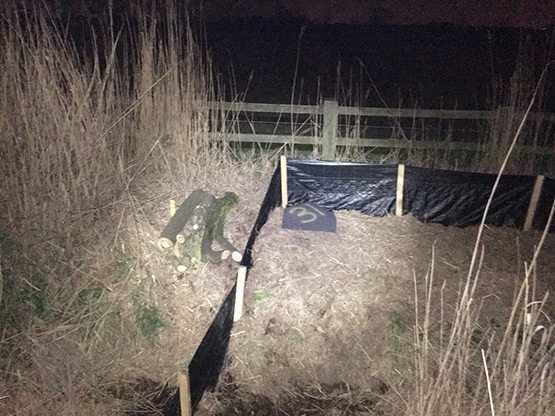Background
The development of the M6 J16-19 Smart Motorway Project required mitigation measures to protect Great Crested Newts. This included large areas of vegetation management under supervision of an ecologist plus the installation of 7km of newt fencing and trapping under licence from Natural England.
Original Method
The conventional methodology for newt trapping involved the installation of pitfall traps. These are opened every evening and checked and closed the following morning for a typical period of 30 days. Newts, which are mobile at night, fall into the traps and can be translocated to the opposite side of the fence leaving the construction area free of constraint.
Pitfall traps could not be left open during the day due to the risk of newts dying before they could be translocated, therefore the process is at night, but again the traps remain open which could impact on the welfare of the newts.
An additional complication to this process was the Smart Motorway construction methodology which meant that there was no safe means of accessing the hard shoulder to undertake newt mitigation during the daytime.
Solution
Kier worked with the designer’s ecologists to develop a new methodology using carpet tiles as refugia to support capture of newts. Following extensive consultation with ecologists and consultants, no previous examples of night time mitigation were identified. Supported by robust justification statements the proposed new methodology was agreed by Natural England without modification. The project used the methodology to successfully translocate newts ahead of the start of construction delivering a construction site free of ecological constraint.
Results and Learning
- Improved mitigation process that reduces the potential harm to the newts.
- A recognised and approved method for mitigation at night
To find out more, click the link below.
Did you find this article helpful?
Please rate this article

Loading...





